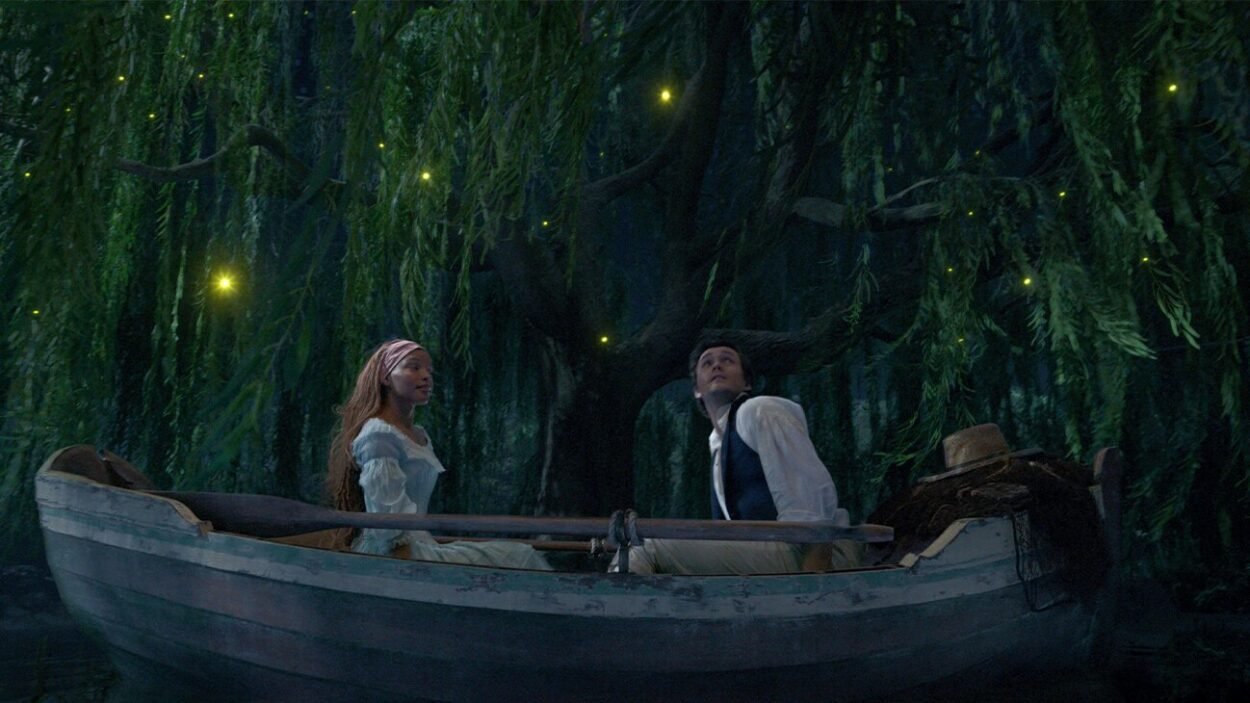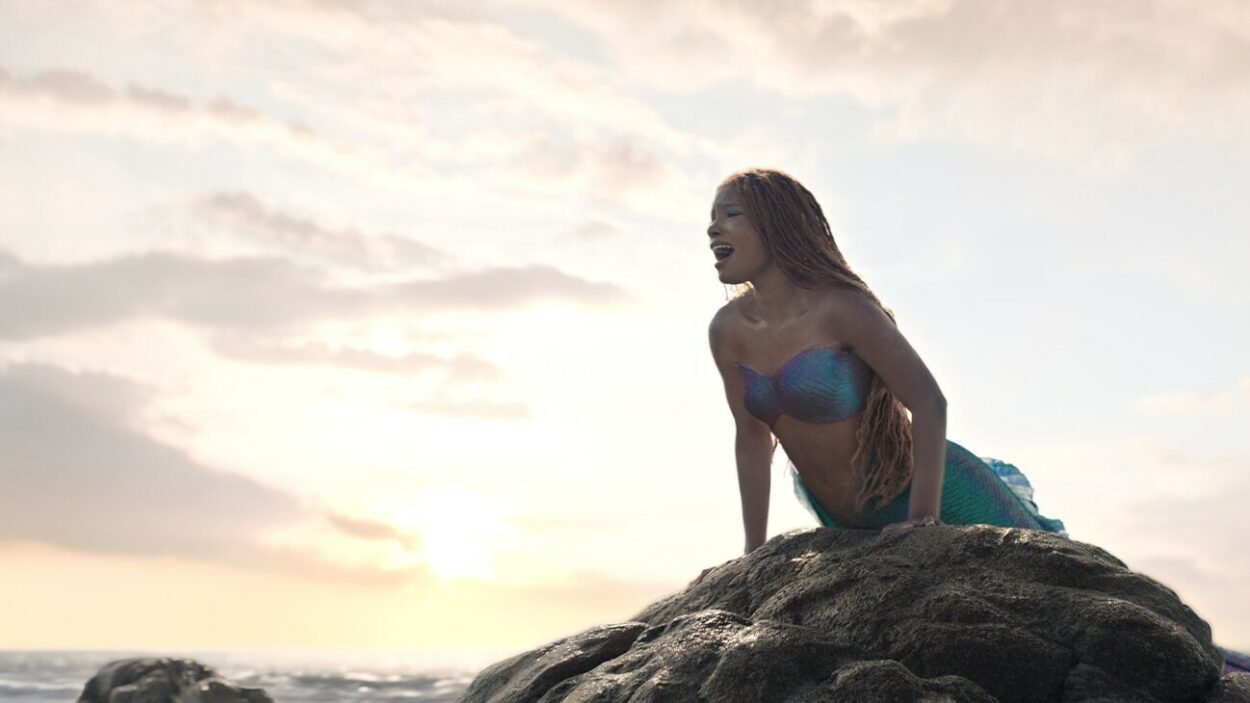“The Little Mermaid (2024)” - Film Review
This review was originally posted on Film Obsessive.
The Little Mermaid is the latest of the classic animated Disney films to be reborn into a live-action world. On paper, this new reimagining is not that far off from its 1989 predecessor. The film still follows Ariel (Halle Bailey), a young mermaid who dreams of living on land amongst the humans. She collects artifacts from shipwrecks much to the disdain of her father, King Triton (Javier Bardem), and his right-hand crab, Sebastian (Daveed Diggs). Triton is overprotective of Ariel and believes that all humans are evil because they murdered his wife when Ariel was young. However, Ariel refuses to lump all humans together and insists there is good in them. She’s particularly interested in a young man, Prince Eric (Jonah Hauer-King), she rescues after he’s thrown from his ship in a storm. A devious sea witch, Ursula (Melissa McCarthy), makes a deal with Ariel: her voice for a chance to live on land.
It has been obvious since the first teaser trailer dropped that the star of the film would be Bailey. In that first teaser, only a small amount of Bailey’s version of “Part of Your World” was used to soundtrack the trailer. The full version of the song was kept close to the film’s chest which results in a goosebumps-inducing showstopper performance that is the indisputable highlight of the film. The stage (or ocean) is Bailey’s to effortlessly command. Jodi Benson’s original version is so wildly beloved, yet Bailey manages to be as good, if not better, in showcasing the fascination, anger, and adoration Ariel has with the world just out of her reach. Bailey’s voice, and overall performance, is what keeps the film afloat. Even when she loses her voice, there’s a magnetism to Bailey’s Ariel that maintains the film’s heart. Without Bailey, The Little Mermaid (2023) would be wholly adrift.
© 2023 Disney Enterprises, Inc.
Four songs have been added to the soundtrack to beef up the film’s runtime from 83 minutes to a whopping 135. The songs were co-written by Hamilton‘s Lin Manuel-Miranda, so there is the requisite rap song (performed by Sebastian and Scuttle) that feels extremely out of left field in contrast to Alan Menken and Howard Ashman’s original songs. Prince Eric is given a ballad that bears far too many similarities to Zac Efron’s golf course performance from High School Musical 2. It sounds like it could have been sung by a nautical boy band and pales in comparison to Eric’s ballad written for the Broadway show, “Her Voice.” The most inspired new songs are the ones written for Ariel when she no longer has a voice. While they aren’t as memorable as the original ones, these songs allow for Bailey to continue to sing even when her character has lost that ability. These songs are Ariel’s internal monologue as she gets used to the human world. It’s a thoughtful, inspired means of giving Ariel agency even when she cannot speak for herself.
Another change in the film’s runtime is thanks to the added development of the relationship between Ariel and Eric. The two bond over their shared love of collecting artifacts, learning about other cultures, and exploring uncharted waters. Like Ariel has her cave of human artifacts she’s collected, Eric has a room full of maps, geodes, and other items he’s come across in his journeys. Even though she has no voice, Ariel’s appreciation for Eric’s collection is obvious. This scene adds necessary depth to the central romantic relationship. In the animated movie, it was easy to get away with very little meaningful connection between Ariel and Eric. It was not uncommon for the princesses in that era of Disney movies to have very little agency, so no real effort was needed to sell the love story. Now, audiences have higher expectations when it comes to how these fairytales are told. They want the princesses to speak their minds, stand on their own two feet, and exist for more than a Prince Charming. The Little Mermaid (2023) manages to balance this love story with Ariel’s own emotional and developmental arc. Of course, it helps that Bailey and Hauer-King’s chemistry is sparkling. Their flirtations as they tour the kingdom and their longing gazes during “Kiss the Girl” are pure romance. When people talk about wanting a Disney fairytale relationship, they’re talking about this version of Ariel and Eric.
© 2023 Disney Enterprises, Inc.
In the lead-up to the release, the internet had much to say about the visual effects and overall dark look of the movie. Thankfully, The Little Mermaid (2023) is nowhere near as murky as the trailers would have lead you to believe. The ocean is bright, bold, and luminous, especially during “Under the Sea.” Despite that, the CGI is inconsistent and leaves a lot to be desired. The most egregious moment is also probably the animated film’s most famous shot. During “Part of Your World (Reprise),” Ariel perches herself on a rock as a wave crashes behind her as she sings about a new beginning. In the animated version, it’s triumphant and gorgeous. In the live action film, it misses that same emotional gut punch. The wave looks more like a small splash and it undermines the work of Bailey in that moment.
The Little Mermaid (2023) is the most successful of the live-action Disney remakes. Even with its shortcomings, the heart of the animated film exists within this new version which cannot be said for many other live action remakes. Its success comes and goes in waves because of the film’s uneven script, but when the wave does come in, it washes over the audience warmly. There’s hope, desperation, longing, and adventure in Ariel, it’s what drew so many people to her in the first place. She dreams of a world that’s not her own and is brave enough to go after what she wants. We could all learn a lesson or two from this little mermaid.
Follow me on BlueSky, Instagram, Letterboxd, & YouTube. Check out Movies with My Dad, a new podcast recorded on the car ride home from the movies.


